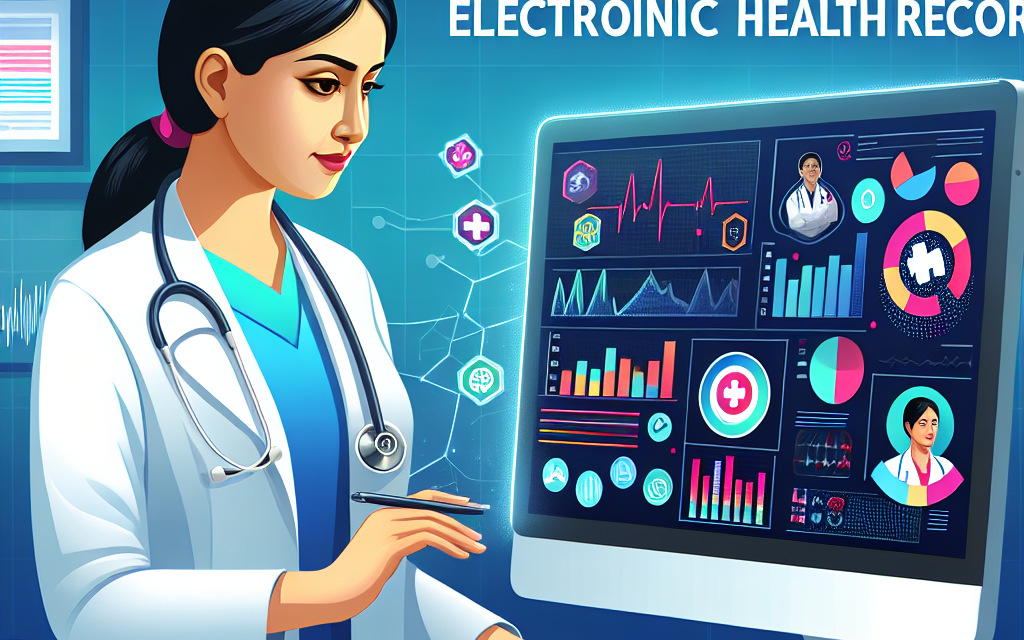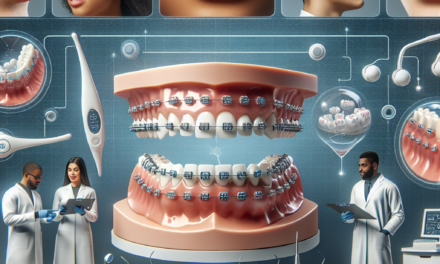Enhancing Patient Outcomes Through EHRs | Nextech
Electronic Health Records (EHRs) have revolutionized the healthcare landscape, providing a digital platform for storing and managing patient information. As healthcare systems increasingly adopt EHRs, the focus has shifted towards enhancing patient outcomes. This article explores how EHRs, particularly through the lens of Nextech, can improve patient care, streamline workflows, and foster better communication among healthcare providers. We will delve into five key areas: data accessibility, patient engagement, interoperability, clinical decision support, and analytics and reporting.
1. Data Accessibility: The Foundation of Quality Care
Data accessibility is one of the most significant advantages of EHRs. With patient information stored digitally, healthcare providers can access comprehensive medical histories, treatment plans, and test results at their fingertips. This immediacy is crucial for making informed decisions that directly impact patient outcomes.
One of the primary benefits of data accessibility is the reduction of medical errors. According to a study published in the Journal of the American Medical Association, EHRs can reduce medication errors by up to 50%. This is largely due to features such as electronic prescribing, which minimizes the risk of misinterpretation of handwritten prescriptions.
Moreover, EHRs facilitate better coordination of care. For instance, when a patient visits multiple specialists, each provider can access the same up-to-date information, ensuring that everyone is on the same page regarding the patient’s treatment plan. This is particularly important for patients with chronic conditions who often see multiple healthcare providers.
- Case Study: The Cleveland Clinic – The Cleveland Clinic implemented an EHR system that allowed for real-time access to patient data across its network. This led to a 30% reduction in duplicate tests and improved patient satisfaction scores.
- Statistics – A survey by the Office of the National Coordinator for Health Information Technology found that 96% of hospitals reported improved access to patient information after adopting EHRs.
Furthermore, EHRs enhance data accessibility for patients as well. Patient portals allow individuals to view their health records, lab results, and medication lists. This transparency empowers patients to take an active role in their healthcare, leading to better adherence to treatment plans and improved health outcomes.
2. Patient Engagement: Empowering Individuals in Their Care
Patient engagement is a critical component of effective healthcare delivery. EHRs play a pivotal role in fostering this engagement by providing tools that encourage patients to participate actively in their care. Through features such as patient portals, educational resources, and communication tools, EHRs can significantly enhance the patient experience.
One of the most impactful features of EHRs is the patient portal, which allows patients to access their health information, schedule appointments, and communicate with their healthcare providers. A study published in the Journal of Medical Internet Research found that patients who actively use portals are more likely to adhere to treatment plans and attend follow-up appointments.
- Example: MyChart – Many healthcare organizations use MyChart, a popular patient portal that enables patients to view their medical records, request prescription refills, and send messages to their providers. This has led to increased patient satisfaction and improved health outcomes.
- Statistics – According to a report by the Pew Research Center, 52% of patients who use online health tools feel more in control of their health.
Moreover, EHRs can facilitate personalized communication between providers and patients. Automated reminders for appointments, vaccinations, and screenings can be sent through the EHR system, ensuring that patients stay informed about their health needs. This proactive approach can lead to early detection of health issues and better management of chronic conditions.
In addition to communication tools, EHRs can provide educational resources tailored to individual patients. For example, if a patient is diagnosed with diabetes, the EHR can offer relevant articles, videos, and dietary guidelines, empowering the patient to make informed decisions about their health.
3. Interoperability: Breaking Down Silos in Healthcare
Interoperability refers to the ability of different EHR systems to communicate and share data seamlessly. This is crucial for enhancing patient outcomes, as it allows for a more holistic view of a patient’s health history, regardless of where they receive care. Nextech emphasizes interoperability as a key feature of its EHR solutions, enabling healthcare providers to collaborate effectively.
The lack of interoperability has long been a challenge in healthcare, leading to fragmented care and incomplete patient records. According to a report by the Office of the National Coordinator for Health Information Technology, nearly 30% of patients experience care fragmentation due to incompatible EHR systems. This can result in duplicated tests, delayed diagnoses, and increased healthcare costs.
- Case Study: Interoperability in Action – A study conducted by the Mayo Clinic demonstrated that implementing an interoperable EHR system reduced duplicate imaging tests by 40%, leading to significant cost savings and improved patient care.
- Statistics – The Healthcare Information and Management Systems Society (HIMSS) reported that organizations with interoperable EHR systems experience a 20% reduction in hospital readmissions.
Interoperability also enhances care coordination for patients with complex medical needs. For example, if a patient is referred from a primary care physician to a specialist, the specialist can access the patient’s complete medical history, including previous treatments and test results. This comprehensive view allows for more informed decision-making and reduces the likelihood of adverse events.
Furthermore, interoperability supports population health management initiatives. By aggregating data from various sources, healthcare organizations can identify trends, monitor outcomes, and implement targeted interventions to improve community health. For instance, during the COVID-19 pandemic, interoperable EHR systems enabled public health officials to track infection rates and vaccination progress in real-time.
4. Clinical Decision Support: Enhancing Provider Decision-Making
Clinical decision support (CDS) tools integrated within EHR systems are designed to assist healthcare providers in making informed clinical decisions. These tools leverage patient data and evidence-based guidelines to provide recommendations, alerts, and reminders that enhance the quality of care.
One of the primary benefits of CDS is the reduction of diagnostic errors. A study published in the New England Journal of Medicine found that implementing CDS tools led to a 20% decrease in misdiagnoses. By providing real-time alerts for potential drug interactions, allergies, and deviations from clinical guidelines, EHRs help providers make safer and more effective treatment decisions.
- Example: Nextech’s CDS Tools – Nextech’s EHR system includes CDS features that alert providers to potential issues based on patient data. For instance, if a patient with hypertension is prescribed a new medication, the system will flag any potential interactions with existing prescriptions.
- Statistics – According to a report by the Agency for Healthcare Research and Quality, CDS tools can improve adherence to clinical guidelines by up to 30%.
Moreover, CDS tools can enhance preventive care by reminding providers about necessary screenings and vaccinations based on patient demographics and medical history. For example, if a patient is due for a mammogram or colonoscopy, the EHR can generate a reminder for the provider, ensuring that preventive measures are not overlooked.
Additionally, CDS tools can support shared decision-making between providers and patients. By presenting evidence-based options and potential outcomes, providers can engage patients in discussions about their treatment choices, leading to more personalized care and improved satisfaction.
5. Analytics and Reporting: Driving Continuous Improvement
Analytics and reporting capabilities within EHR systems are essential for driving continuous improvement in healthcare delivery. By analyzing patient data, healthcare organizations can identify trends, measure outcomes, and implement quality improvement initiatives that enhance patient care.
One of the key advantages of EHR analytics is the ability to track performance metrics. For instance, healthcare organizations can monitor readmission rates, patient satisfaction scores, and adherence to clinical guidelines. This data-driven approach allows organizations to identify areas for improvement and implement targeted interventions.
- Case Study: Quality Improvement Initiatives – A hospital system that utilized EHR analytics to track readmission rates for heart failure patients identified a trend of high readmission within 30 days. By implementing a transitional care program that included follow-up phone calls and home visits, the hospital reduced readmission rates by 25%.
- Statistics – According to a report by the Healthcare Cost and Utilization Project, hospitals that leverage EHR analytics experience a 15% improvement in patient outcomes compared to those that do not.
Furthermore, EHR analytics can support population health management by identifying high-risk patients who may benefit from targeted interventions. For example, by analyzing data on patients with chronic conditions, healthcare organizations can identify individuals who are not adhering to their treatment plans and reach out with support and resources.
Additionally, reporting capabilities within EHR systems enable healthcare organizations to comply with regulatory requirements and participate in value-based care initiatives. By tracking quality measures and submitting reports to payers, organizations can demonstrate their commitment to improving patient outcomes and receive financial incentives for their efforts.
Conclusion: The Future of Patient Care with EHRs
Enhancing patient outcomes through EHRs is not just a technological advancement; it represents a fundamental shift in how healthcare is delivered. By improving data accessibility, fostering patient engagement, promoting interoperability, supporting clinical decision-making, and leveraging analytics, EHRs empower healthcare providers to deliver high-quality care that meets the needs of patients.
As healthcare continues to evolve, the role of EHRs will only become more critical. Organizations like Nextech are at the forefront of this transformation, providing innovative solutions that enhance patient care and drive better health outcomes. By embracing the full potential of EHRs, healthcare providers can create a more connected, efficient, and patient-centered healthcare system.
In summary, the integration of EHRs into healthcare practices is a powerful tool for enhancing patient outcomes. As we move forward, it is essential for healthcare organizations to prioritize the adoption and optimization of EHR systems to ensure that they are equipped to meet the challenges of modern healthcare and improve the lives of patients.





